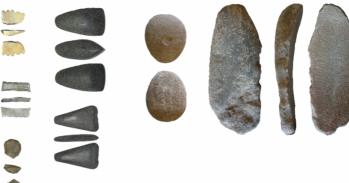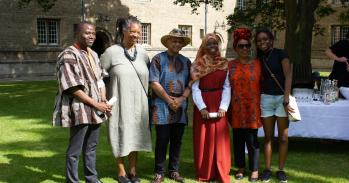
Researchers from the African Genome Variation Project (AGVP) have published the first attempt to comprehensively characterise genetic diversity across Sub-Saharan Africa. The study of the world’s most genetically diverse region will provide an invaluable resource for medical researchers and provides insights into population movements over thousands of years of African history. These findings appear in the journal Nature.
Researchers from the African Genome Variation Project (AGVP) have published the first attempt to comprehensively characterise genetic diversity across Sub-Saharan Africa. The study of the world’s most genetically diverse region will provide an invaluable resource for medical researchers and provides insights into population movements over thousands of years of African history. These findings appear in the journal Nature.
The AGVP has substantially expanded on our understanding of African genome variation. It provides the first practical framework for genetic research in Africa and will be an invaluable resource for researchers across the world.
Dr Manjinder Sandhu
“Although many studies have focused on studying genetic risk factors for disease in European populations, this is an understudied area in Africa,” says Dr Deepti Gurdasani, lead author on the study and a Postdoctoral Fellow at the Wellcome Trust Sanger Institute, UK “Infectious and non-infectious diseases are highly prevalent in Africa and the risk factors for these diseases may be very different from those in European populations.”
“Given the evolutionary history of many African populations, we expect them to be genetically more diverse than Europeans and other populations. However we know little about the nature and extent of this diversity and we need to understand this to identify genetic risk factors for disease.”
Dr Manjinder Sandhu (Department of Medicine, and lead senior author from the Wellcome Trust Sanger Institute) and colleagues collected genetic data from more than 1800 people – including 320 whole genome sequences from seven populations – to create a detailed characterisation of 18 ethnolinguistic groups in Sub-Saharan Africa. Genetic samples were collected through partnerships with doctors and researchers in Ethiopia, the Gambia, Ghana, Kenya, Nigeria, South Africa and Uganda.
The AGVP investigators, who are funded by the Wellcome Trust, the Bill and Melinda Gates Foundation and the UK Medical Research Council, found 30 million genetic variants in the seven sequenced populations, a fourth of which have not previously been identified in any population group. The authors show that in spite of this genetic diversity, it is possible to design new methods and tools to help understand this genetic variation and identify genetic risk factors for disease in Africa.
“The primary aim of the AGVP is to facilitate medical genetic research in Africa. We envisage that data from this project will provide a global resource for researchers, as well as facilitate genetic work in Africa, including those participating in the recently established pan-African Human Heredity and Health in Africa (H3Africa) genomic initiative," says Dr Charles Rotimi, senior author from the Centre for Research on Genomics and Global Health, National Human Genome Research Institute, National Institutes of Health, USA.
The authors also found evidence of extensive European or Middle Eastern genetic ancestry among several populations across Africa. These date back to 9,000 years ago in West Africa, supporting the hypothesis that Europeans may have migrated back to Africa during this period. Several of the populations studied are descended from the Bantu, a population of agriculturists and pastoralists thought to have expanded across large parts of Africa around 5,000 years ago.
The authors found that several hunter-gatherer lines joined the Bantu populations at different points in time in different parts of the continent. This provides important insights into hunter-gatherer populations that may have existed in Africa prior to the Bantu expansion. It also means that future genetic research may require a better understanding of this hunter-gatherer ancestry.
“The AGVP has provided interesting clues about ancient populations in Africa that pre-dated the Bantu expansion,” says Dr Manjinder Sandhu. “To better understand the genetic landscape of ancient Africa we will need to study modern genetic sequences from previously under-studied African populations, along with ancient DNA from archaeological sources.”
The study also provides interesting clues about possible genetic loci associated with increased susceptibility to high blood pressure and various infectious diseases, including malaria, Lassa fever and trypanosomiasis, all highly prevalent in some regions of Africa. These genetic variants seem to occur with different frequencies in disease endemic and non-endemic regions, suggesting that this may have occurred in response to the different environments these populations have been exposed to over time.
“The AGVP has substantially expanded on our understanding of African genome variation. It provides the first practical framework for genetic research in Africa and will be an invaluable resource for researchers across the world. In collaboration with research groups across Africa, we hope to extend this resource with large-scale sequencing studies in more of these diverse populations,” says Dr Sandhu.
The text in this work is licensed under a Creative Commons Licence. If you use this content on your site please link back to this page. For image rights, please see the credits associated with each individual image.





